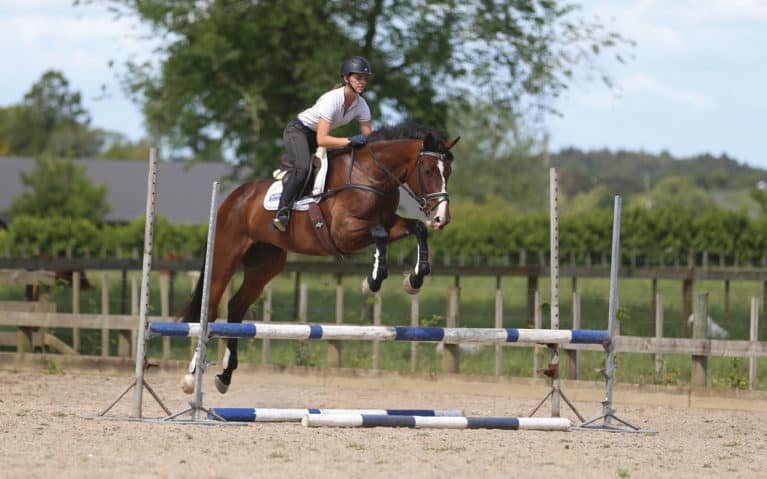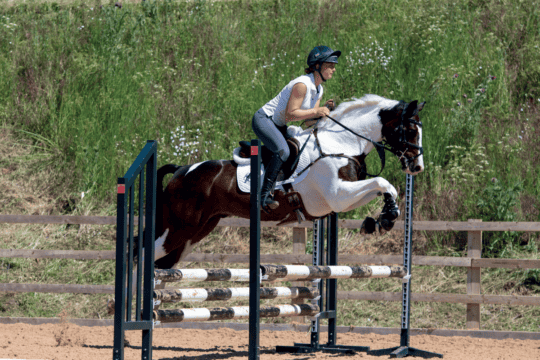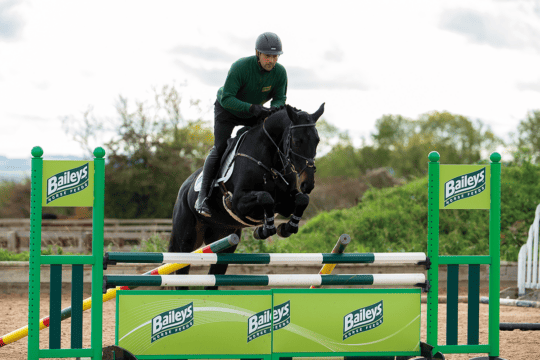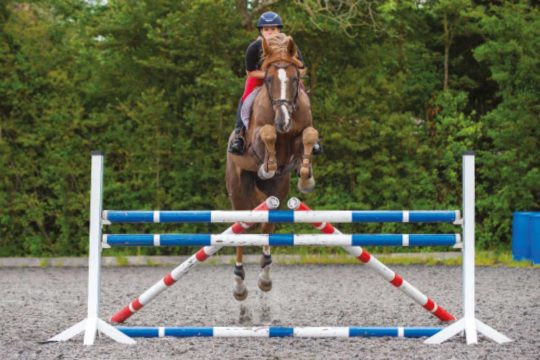-
Riding Schooling and Training
-
Health and Veterinary
-
Management
-
Mind Matters
-
Buying and Selling
-
Insurance Advice
FAQs
Starting your horse’s jumping career can feel like a big responsibility. International showjumper Daniel Meech shares his straightforward exercises for success

There is little more rewarding than taking your young horse through his training. The process requires a thorough approach and endless patience, especially when it comes to teaching him how to jump. There are a few key elements to remember before you get underway…
- horses need their training to be black and white. Decide what you want and ask for it clearly, rewarding your horse for doing what you wanted and repeating the aid if he doesn’t respond, until he understands. Your horse needs to hear clear messages from you.
- his education needs to be progressive in order to give him the mental and physical ability to do his job, and progress to higher fences.
- take your time. It’s common for a young horse to feel worried and distracted, particularly in a new environment, so don’t rush and ensure he’s as comfortable and relaxed as possible. He can’t perform his best if worry is causing his attention
to wander. - flatwork is key. He must be obedient and soft on the flat before you even think about jumping. If there are problems with your flatwork, there will be problems over fences, so get that right first.
Step one: Start right
It can be tempting to try to dominate your young horse, but this is a mistake. He needs to be able to think for himself, so it’s important to let him make mistakes, so long as you correct them. However, this doesn’t mean allowing him to work incorrectly – it’s essential to teach him the right way from the beginning, otherwise you’ll spend twice as long trying to retrain a bad habit. Always train with discipline so that when it comes to competition, nothing needs to change because working correctly is second nature.
Step two: Poles
Poles are an essential precursor to jumping because they help to get your horse thinking about his striding and feet before moving onto fences. Begin with two trot poles before moving them out to a canter distance. Don’t progress until your horse feels relaxed and don’t worry if it takes a whole session, or even a few sessions, until he’s relaxed enough in trot for you to ride to them in canter.
Step three: Poles on a circle
Place four poles in a fan shape on a 20m circle. Use the same distance as you did for step one, walking it to the centre of each pole. This is a great exercise for getting your horse to think about placing his feet, as well as building balance and strength. It encourages him to lift his legs and use his entire body, while the curve of the circle create suppleness and helps him to stay round and into the contact. Once he’s confident doing the exercise in trot, change the poles to a canter distance.
Step four: Correct your mistakes
Young horses can be quick to look for an easy route out of a tricky situation, which can mean falling onto the forehand or rushing away from the exercise. Be quick to nip this in the bud by rebalancing or riding a transition to halt after the fence. Focus on keeping your horse’s body straight during the downward transition – don’t allow his quarters to fall in or out.
Step five: Figure of eight
It’s important for your horse to learn to land on either canter lead and the best way to do this is by riding over a small fence in a figure of eight pattern. As you jump the fence, open your rein to ask him to land on that lead. Don’t let everything else go out of the window, though – it’s still important to maintain rhythm, circle size and striding to the fence.
Find out more of Daniel’s top tips for teaching your horse to jump in the August issue of Horse&Rider, in shops from 29 June 2017.















